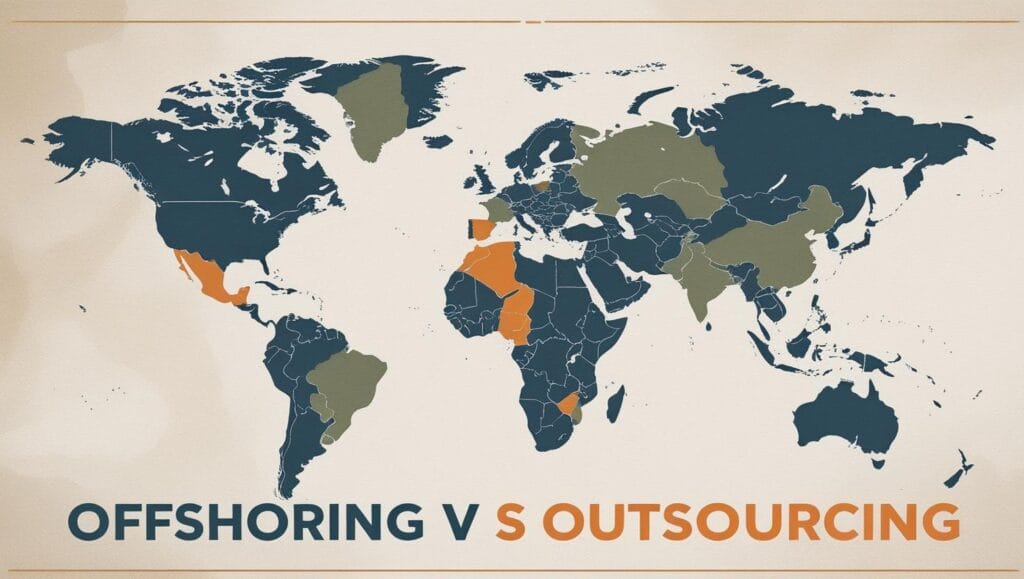Beyond Borders, Beyond The Balance Sheet: Six Forms of Loss from Unmanaged International Investment Risks
In our interconnected world, expanding into foreign markets offers a tantalizing promise of new customers, lower production costs, and unprecedented growth. However, this global chessboard is fraught with hidden dangers. For every success story, there are cautionary tales of companies that suffered devastating losses, not from poor products, but from a failure to anticipate and manage the unique risks of operating in another country.
Proactive risk management is not an administrative burden; it is the single most important factor separating a successful global expansion from a catastrophic failure. This guide details the six critical types of risk that can lead to significant loss for any company investing abroad and outlines the essential strategies needed to navigate these treacherous waters.
What is Foreign Direct Investment (FDI)?
This article focuses on the risks associated with Foreign Direct Investment (FDI), which is a significant investment made by a company or individual from one country into business interests located in another country. This goes beyond simply trading goods and includes activities like opening a factory, acquiring a local company, or establishing a physical business presence.
Six Critical Risks and Their Resulting Losses
A failure to manage the following risks can result in direct and indirect losses that jeopardize the entire international venture.
🏛️1. Political Risk
The risk that political actions, instability, or policy changes in the host country will negatively impact your business operations and assets.
Leads to Loss of Assets & Profitability:
- Expropriation: The host government seizes your factory or assets, resulting in a total or near-total loss of your initial investment.
- Regulatory Squeeze: New, unexpected taxes, tariffs, or local ownership requirements are imposed, drastically reducing your profitability.
- Disruption & Damage: Civil unrest or war can halt your operations and cause physical damage to your property.
- Trapped Profits: The government freezes your ability to convert local currency profits back to your home currency.
Risk Management Strategies:
Purchase political risk insurance, form joint ventures with influential local partners, conduct deep geopolitical analysis before investing, and maintain positive government relations.
📉2. Economic Risk
The risk that the host country’s macroeconomic performance will falter, reducing the demand for your products and the value of your investment.
Leads to Loss of Revenue & Market Value:
- Recession: A severe economic downturn in the host country crushes consumer spending and demand for your goods or services.
- Hyperinflation: The local currency devalues so rapidly that your earnings become worthless when converted to your home currency.
- Soaring Debt Costs: A sudden spike in local interest rates dramatically increases the cost of financing your operations.
Risk Management Strategies:
Perform rigorous economic forecasting, diversify investments across several countries, structure pricing to be flexible, and use financial instruments to hedge against interest rate volatility.
💱3. Currency (Foreign Exchange) Risk
The risk that adverse movements in the exchange rate between your home and the host country’s currency will erode the value of your profits and assets.
Leads to Loss of Value Through Translation:
- Transaction Loss: You agree to a sale in the local currency, but its value drops significantly before you receive payment, giving you less than you expected.
- Translation Loss: When preparing your company’s consolidated financial statements, the value of your foreign subsidiary’s assets and income statement is lower simply because of a weaker foreign currency.
Risk Management Strategies:
Use currency hedging tools (forwards, options), invoice in your stable home currency where possible, and borrow money in the local currency to create a “natural hedge” against currency movements.
⚖️4. Legal & Regulatory Risk
The risk of navigating an unfamiliar legal system, where laws regarding contracts, employment, and property may be vastly different and weakly enforced.
Leads to Loss from Fines & Litigation:
- Compliance Penalties: You unknowingly violate complex local labor or environmental laws, leading to heavy fines and operational shutdowns.
- Contract Disputes: A local partner breaches a contract, but the local court system is slow, biased, or ineffective, leaving you with no recourse.
- IP Theft: Your patents or trademarks are stolen by a local competitor due to weak intellectual property laws, resulting in a direct loss of your competitive advantage.
Risk Management Strategies:
Conduct extensive legal due diligence with local law firms, implement robust internal compliance programs, register all intellectual property locally, and seek international arbitration clauses in contracts.
🤝5. Cultural & Social Risk
The risk of misunderstanding or failing to adapt to the local culture, social norms, and consumer behaviors, leading to costly blunders.
Leads to Loss of Market Share & Reputation:
- Marketing Failure: A product name or advertising campaign is culturally inappropriate or offensive, resulting in a public relations disaster and wasted marketing spend. * Management Inefficiency: A home-country management style clashes with local work ethics, leading to low morale, high employee turnover, and poor productivity.
- Product Misfit: The product fails because it doesn’t account for local tastes, traditions, or usage habits.
Risk Management Strategies:
Hire and empower local managers, provide extensive cross-cultural training to expatriate staff, conduct deep ethnographic research on consumer habits, and adapt marketing and products for the local market.
⚙️6. Operational Risk
The risk that the day-to-day processes required to run your business will fail due to issues with local infrastructure, talent, or suppliers.
Leads to Loss from Business Interruption:
- Supply Chain Collapse: Your production halts because of unreliable local suppliers or underdeveloped transportation infrastructure (poor roads, ports).
- Talent Gap: You are unable to find, train, or retain local workers with the necessary skills to operate your business effectively.
- Infrastructure Failure: Unreliable electricity, internet, or water supply frequently disrupts your operations, causing delays and increasing costs.
Risk Management Strategies:
Thoroughly vet and diversify local suppliers, invest in employee training and development programs, build redundant systems for critical infrastructure (e.g., backup generators), and develop detailed business continuity plans.
Conclusion: Risk Management as the Ultimate Competitive Advantage
Venturing into foreign markets is a defining feature of modern business, offering pathways to immense growth. However, the landscape is littered with the remnants of companies that underestimated the complexity of international risk. The six sources of loss detailed above—from political seizure to cultural misunderstanding—are not isolated possibilities; they are interconnected challenges that demand a sophisticated, proactive, and holistic approach to risk management.
Ultimately, a company’s ability to navigate these risks is its true international competitive advantage. Success abroad is built not just on a great product, but on the foresight, diligence, and resilience to turn potential losses into manageable challenges.
Frequently Asked Questions (FAQ)
What’s the difference between political risk and legal risk?
Political risk stems from government actions and instability, such as a government seizing assets (expropriation) or civil unrest disrupting business. Legal risk stems from the existing laws and judicial system of a country. It involves losses from failing to comply with complex local regulations (e.g., environmental or labor laws), losing a contract dispute, or having your intellectual property stolen due to weak legal protections. In short, political risk is about what a government might do, while legal risk is about navigating the laws as they currently exist.
Which type of risk is the hardest to manage?
While all have their challenges, political risk is often considered the hardest to manage because it can be sudden, dramatic, and driven by factors far outside a company’s control. A company can hedge currency or conduct legal due diligence, but it’s very difficult to predict or prevent a coup, a war, or a sudden decision to nationalize an entire industry. This is why tools like political risk insurance and building strong local relationships are so critical.
Is it possible to completely eliminate risks in foreign investment?
No, it is impossible to eliminate all risks. The goal of international risk management is not risk elimination, but risk mitigation. It’s about identifying potential threats, assessing their likelihood and impact, and then implementing strategies to reduce that impact to an acceptable level. The remaining, or ‘residual,’ risk is the price of admission for accessing the potential rewards of a global market.
How can a small business afford to manage all these risks?
Small businesses can take several cost-effective steps. They can start by exporting rather than making a large direct investment. They can partner with local distributors who understand the market, use government resources (like the U.S. Commercial Service) for market research, purchase specific insurance policies (like political risk or credit insurance), and start in countries with stable political and legal systems that are culturally similar to their own home market.

